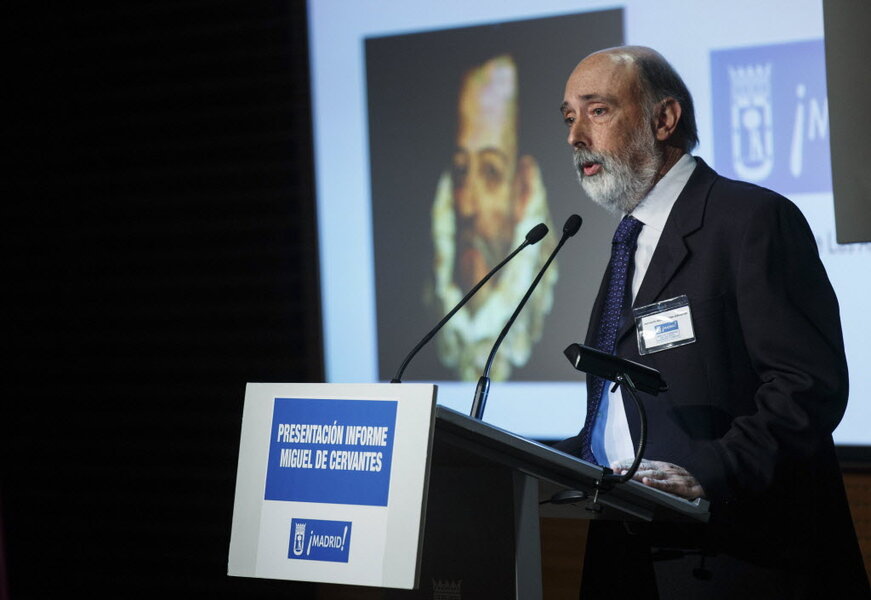Researchers find remains of 'Don Quixote' author Miguel de Cervantes
Loading...
Archeologists announced on Tuesday that the remains of Spain’s most renowned writer, Miguel de Cervantes, have been discovered in a convent in Madrid.
Cervantes, who died in 1616, is known as the father of the modern novel. He wrote Don Quixote, a tale of an errant knight and his loyal sidekick, Sancho Panza. Originally written in Spanish, this two volume epic has been translated into more than 60 languages.
Now it seems that his remains, along with those of his wife and several others, were found by a team of researchers in the Convent of the Barefoot Trinitarians in Madrid. Cervantes had asked to be buried in the convent after the order of nuns helped free him when he was captured by pirates in 1575, but the exact location was forgotten when the convent was rebuilt in the 17th century.
“He’s there,” historian Fernando de Prado told the Guardian, referencing fragmented bones found in the floor of the crypt. “We know that some of these bones belong to Cervantes.”
The search began in April 2014 with a team of 30 people searching the soil with infrared cameras, 3D scanners, and ground-penetrating radar. The remains were found in one of the 33 niches against the wall of the convent after the team first found a casket bearing the author’s initials.
The researchers hoped to find evidence that would point to specific events in the Cervantes’ life, such as the loss of the use of his left hand or the fact that he was shot in the chest at least once, but Prado said that no bones have been found bearing these traits, according to The Guardian. Instead, historical and archeological evidence to suggest that bones belonged to Cervantes and his wife.
DNA tests are currently being carried out to confirm that the findings are in fact Cervantes’, but forensic anthropologist Francisco Etxeberria is skeptical that they will yield helpful results are no known descendants of the author.
“Right now, we don’t have any DNA possibilities to compare to,” Dr. Etxeberria said. However, he added that "everything coincides to lead us to believe that Cervantes is there."
The tests may be able to help figure out which bones do not belong to Cervantes, however.
Cervantes will be reburied in the convent, as per his original wishes. Madrid city officials hope to open the crypt to the public to mark the 400th anniversary of his death, which will be next year.








